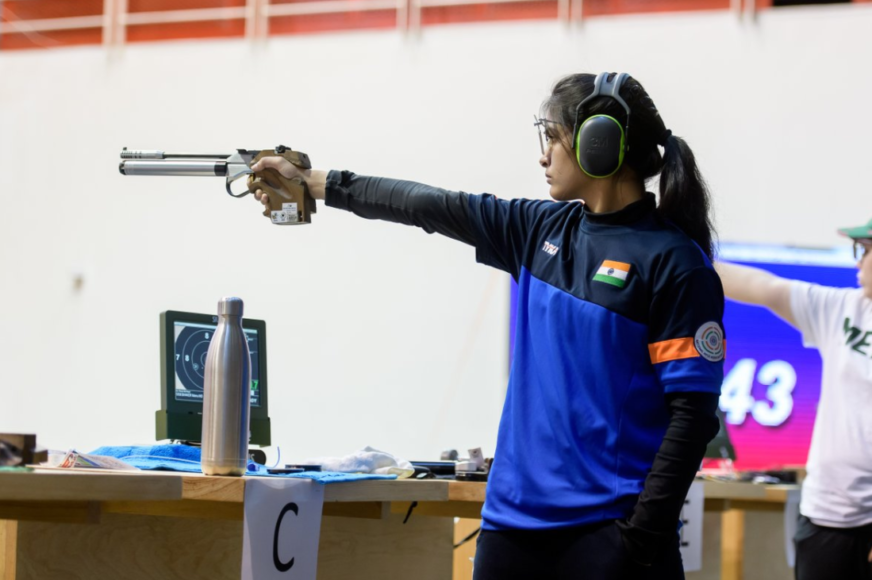Shooting as a competitive sport first came into the limelight in 2008 when Abhinav Bindra won the first individual gold medal for India at the Beijing Olympic Games. Since then India has won a total of four Olympic medals in this sport, not to mention the several medals at the World Championships and the Commonwealth Games. Yet, for most people, a camera comes across the mind first and not a gun on hearing the word ‘shoot’. This article aims to familiarize the readers with shooting as a competitive sport.
STRUCTURE OF THE GAME
The International Shooting Sport Federation (ISSF) is the ultimate governing body in the world of this sport. It was founded in 1907 and is headquartered at Germany. All the matches take place based on the rules laid down by the ISSF. Every match has 2 rounds. The qualification round in which all the competitors shoot a fixed number of shots. The top eight players compete against

each other in the final round. According to the ISSF, there are 15 shooting events in the Olympics across three categories namely: rifle,pistol, and shotgun. They are divided into different events based on the distance of the target from the shooter. It can be 10m or 50m for rifle shooting and 10m, 25m or 50m for pistol shooting. Rifle and pistol events have 60 shots in each match for both men and women. Rifle shooting involves a lot of other equipment apart from a rifle. The rifle is a long and heavy gun weighing about 5 kilograms. In order to make sure that your body stays in the same position throughout the match, the players have to wear a suit comprising of jacket and trousers made of very stiff canvas. Since a pistol is lighter and smaller, no suit is needed. However, the target for 10m air pistol is much larger than the one for 10m air rifle. In Shotgun, there are events like trap and double trap where the player has to aim at and hit a moving target. It is basically the modern-day version of hunting a bird flying in the sky. In India, the sole decision-maker is the National Rifle Association of India (NRAI). Every shooter must be registered with the NRAI in order to participate in any national level tournament.
HOW IS SHOOTING DIFFERENT?
Shooting is very different from other sports. First of all, it completely relies on the player’s mental state during the match. Even the smallest distraction during the match can decide the outcome of the match. Losing focus for a single moment is unaffordable. That is why a lot of shooters indulge in yoga and meditation to help themselves concentrate and keep calm. At the same time, one might wonder that since you have to just stand and shoot, physical strength is not required. That is far from the truth. Standing with a 5 kg

rifle for a couple of hours is not easy. In this sport, the body muscles are trained to not move. The body movement must be minimized as less the movement more precise the shot. Even the slightest shift in the position will result in the creation of a large angle at the target distance and in turn, missing the target. One more difference is that, unlike most other sports, the players don’t compete one-on-one against each other. A lot of people shoot simultaneously during a match without really knowing how the others are doing.
PROBLEMS FACED
Shooting is not an easy sport to play. There are not many shooting ranges in India that are up to the international standard. Also, the gun and equipment are not something everyone can afford. The tournaments are held at several locations across the country and it isn’t exactly a piece of cake to travel around with a gun because of security concerns. In spite of so many difficulties, Indian shooters are winning laurels for the country internationally. All the more, shooting has gained India a lot of global recognition. Yet, it is not very talked about. However, things are looking up. Hopefully, in the future, Indian shooters will get the credit that they deserve.

